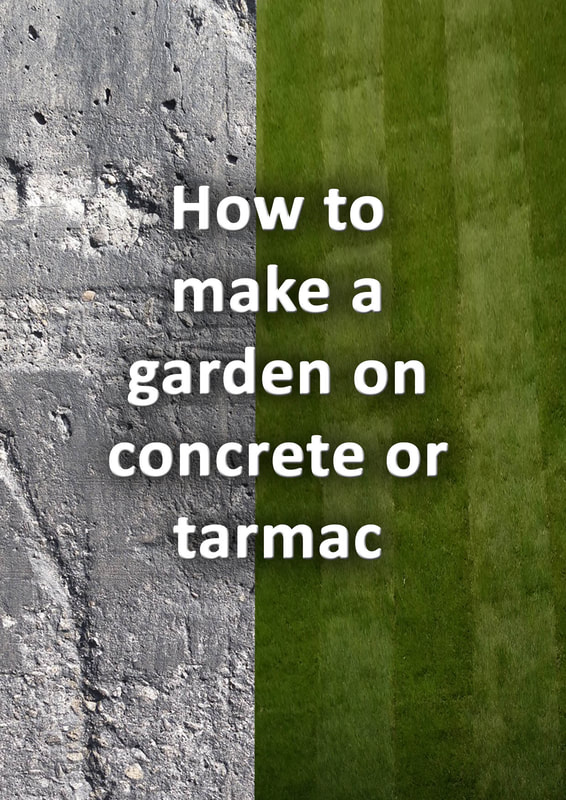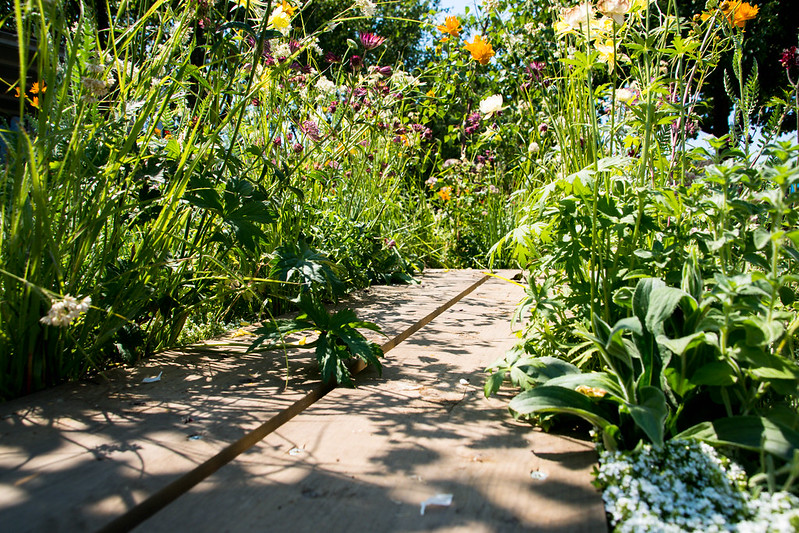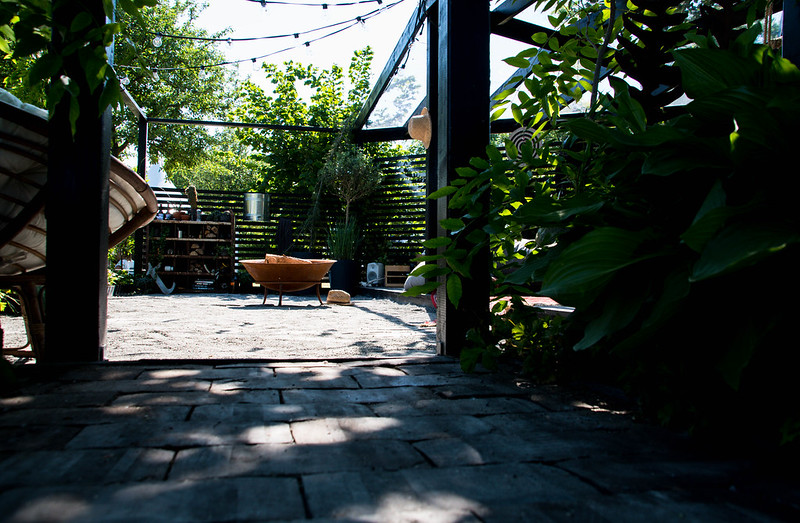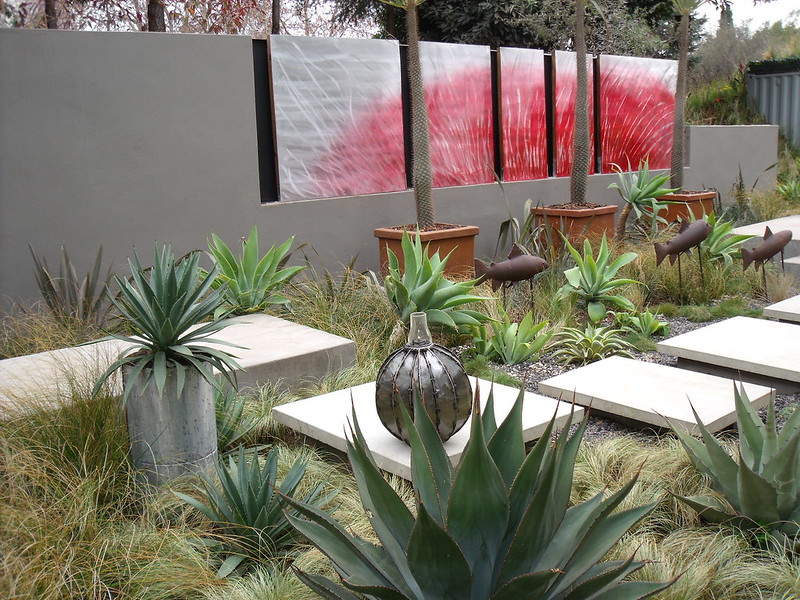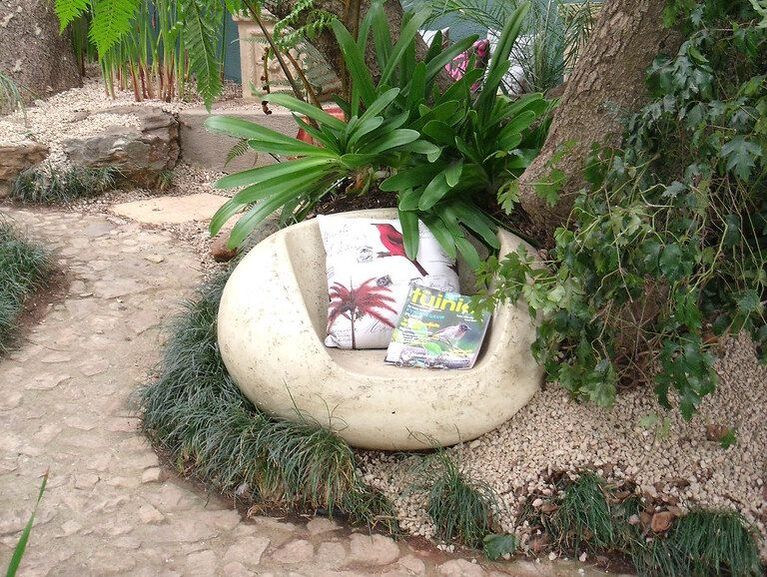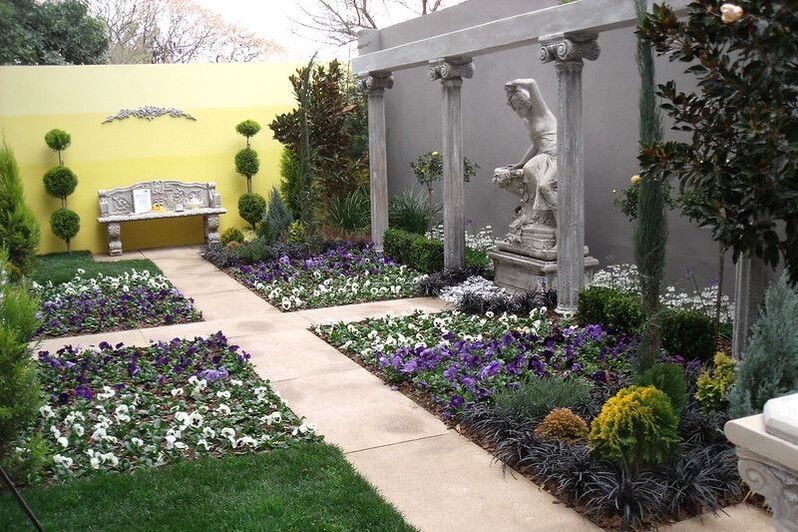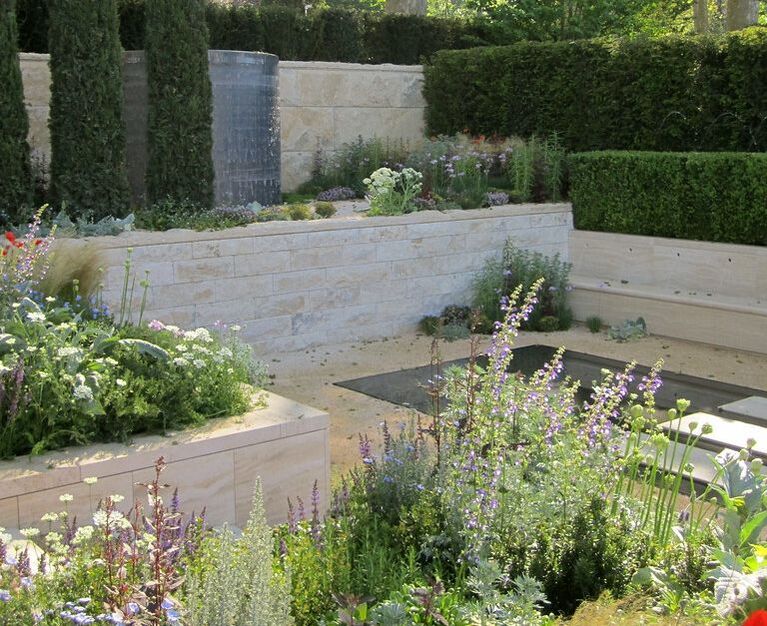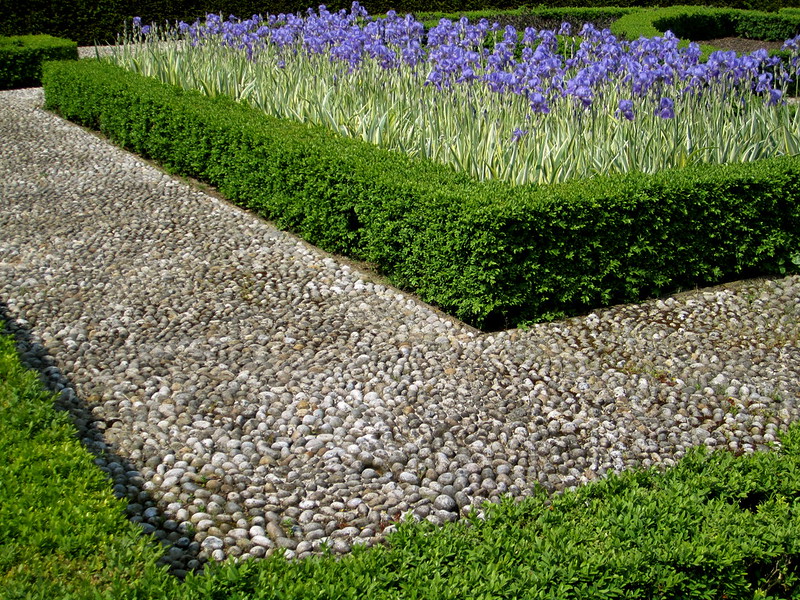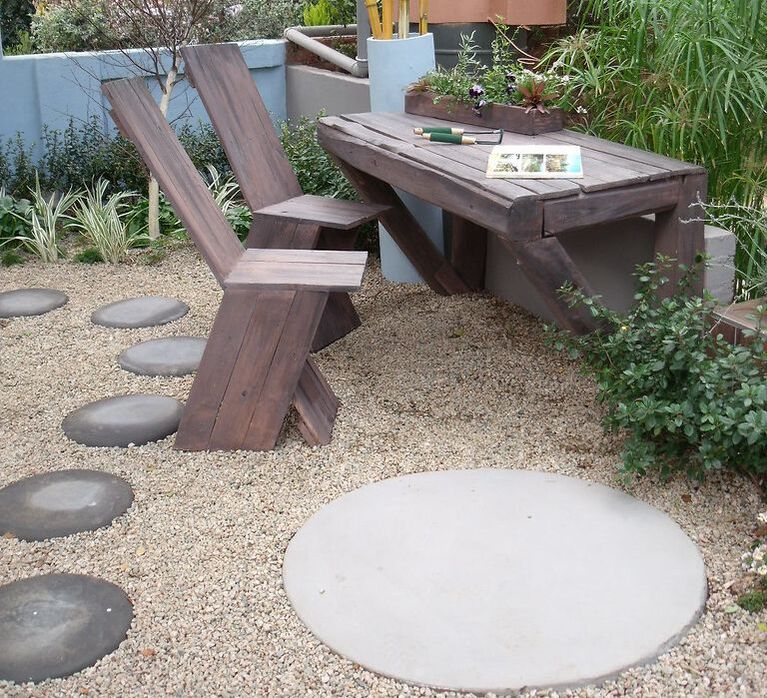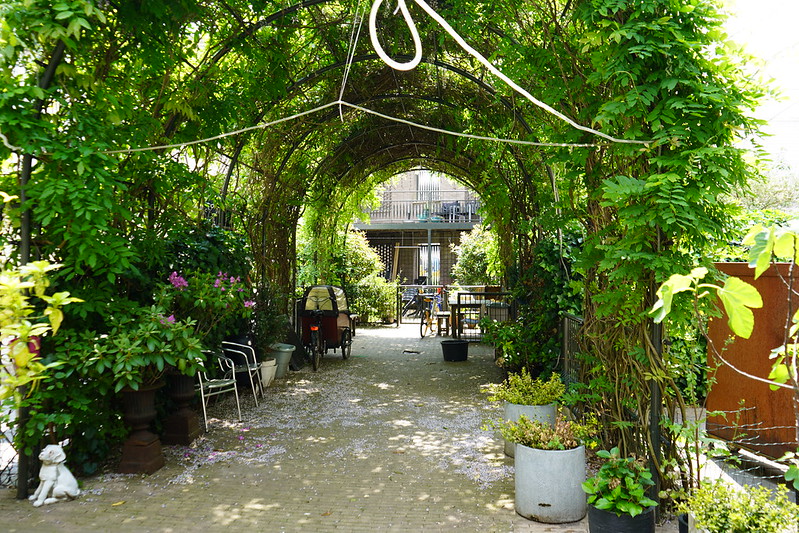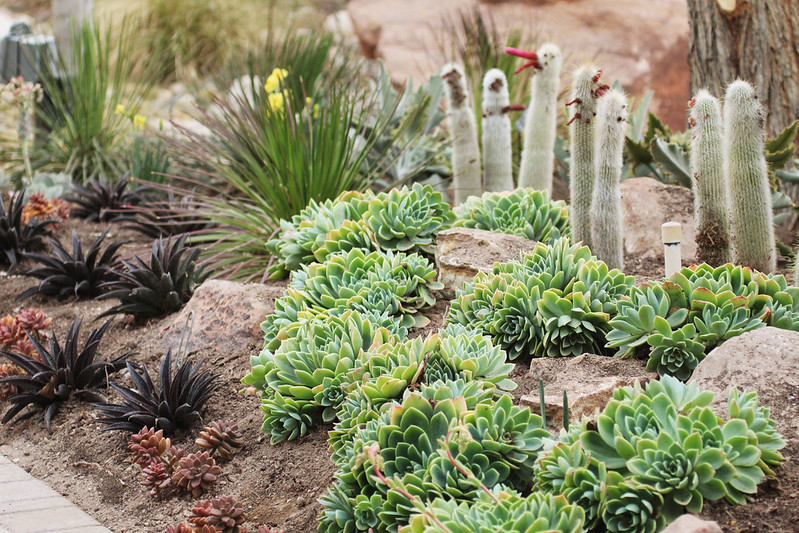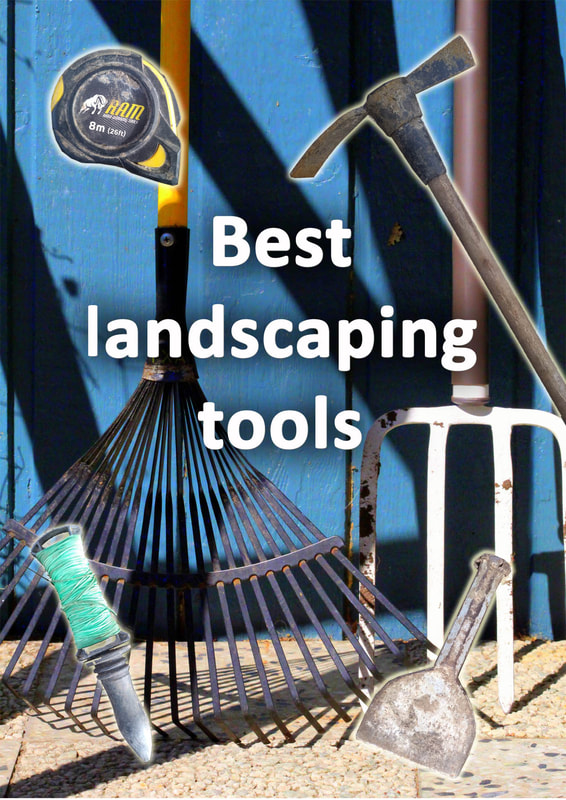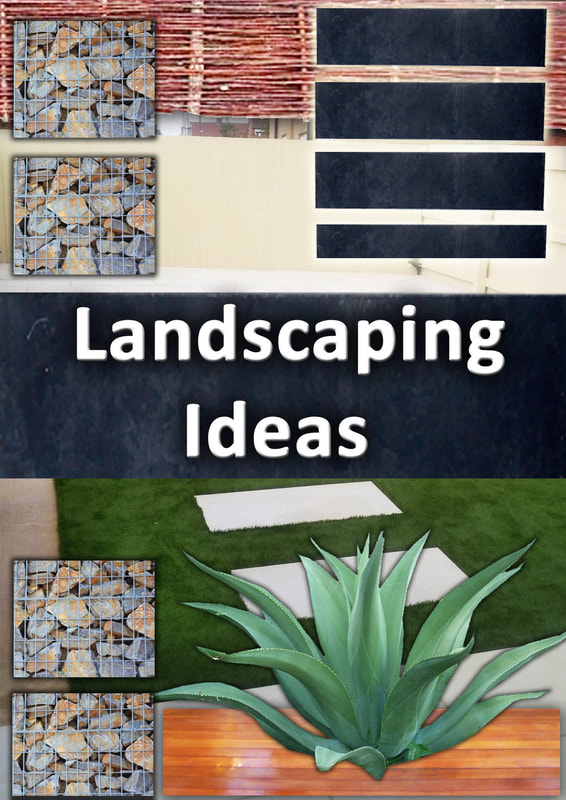|
This article contains affiliate links
It is amazing how gardens can inject that little piece of nature into our lives. Even if you would not consider yourself a gardener gardens always make us feel good. There is much research to show that being surrounded by green spaces is good for our health. Both mentally and physically gardens revitalise us in a way other spaces simply cannot. With the majority of people now living in urban centres less of us have access to green spaces. A continued need for parking and low maintenance landscapes has led to expanses of concrete and tarmac. This has led to the common scenario of having to make a garden on concrete or tarmac. Confronted with such a challenging prospect can intimidating! However it is completely possible to create an amazing garden on either concrete or tarmac. In this article I will describe some recommended installations and tips for building gardens on such hard surfaces. Design
A typical trap people fall into when designing a garden on concrete or tarmac is thinking too small. The restrictive mindset of the situation leads to a series of small installations instead of a wider design vision. Normally a series of flimsy, raised beds are erected which soon degrade and look awful. The first problem with this approach is small vessels of soil are troublesome for plants. Small planters become very dry in summer and waterlogged in winter. Such installations reduce the gardening potential of tarmac and concrete even further. Hard standing does have advantages
Contrary to common belief there are many advantages of starting off with a hard surface. Hard surfaces are the most expensive part of landscape installation. Although ugly concrete and tarmac provide a robust and weed free surface to start with. Furthermore, there are many surfaces on the market which can easily be laid on top of concrete and tarmac. Therefore the combination of breaking out hard standing and building sizable raised beds can create perfect growing borders. Hence a little imagination and some hard work can turn concrete and tarmac into a garden paradise. Be ambitious
The best way to design a garden on hard standing is to pretend there is none! Think big and be as creative as possible. Write down all of your ideas and things the garden must include. Observe precedent images of gardens you like and think about how such elements could be installed into your garden. When you have been through this creative process you will know your certain must haves. This will organise your priorities into a hierarchy which will aid your decision making process. The process will refine your strategy and allow you to omit your less important and expensive options later. Microclimate
A big advantage of concrete and tarmac surfaces is they warm up quickly in the sunshine. This is particularly so in urban gardens with surrounding walls and buildings. Such conditions provide a microclimate which is much warmer than the surrounding region. This means you can grow plants used to warmer climates than your own. This can be a big advantage especially if you are planning a vegetable garden. Fruits and nuts can trained against hard surfaces to produce a bountiful harvest. Such microclimates are also extremely useful for creating Tropical or Mediterranean gardens. Cutting out flower borders
If you have an existing garden which is primarily tarmac or concrete you can still install conventional borders. However you will have to face the fact there will be some labour and expense. You will need to cut out the shapes of your new flower borders to a depth of 140mm. Concrete and tarmac can be cut to this depth using a 12 inch grinder with a diamond blade. The hard standing can then be broken out using a hydraulic breaker.
The broken up materials will then need to be excavated and got rid of. The most common way of doing this is with a skip. The best way to undertake this work is by hiring a contractor.
Get quotes from recommended, local, ground workers and landscapers hear you. Once the hard core has been removed then you can fill the new borders with good quality topsoil. In most cases you will need many tons of soil so be prepared for some expense and hard labour. Building raised planters
When building gardens on concrete and tarmac, raised, beds are a favourable installation. This is because they eliminate the need for heavy breaking, excavation and disposal. However the most effective raised planters should still have contact with virgin soil underneath. This is to provide good drainage and prevent extreme moisture fluctuations. Raised planters can be installed straight on top of concrete and tarmac but this is far from ideal. Nonetheless raised planters can provide great height and deep growing borders for such gardens. Edging
Whatever garden design you are imposing over concrete or tarmac don’t underestimate the importance of edging. Edging can help to compartmentalise defined areas and break up the monotony of expansive surfaces. Many types of edging are also effective at bordering cut sections of tarmac. This is especially useful around new borders as they prevent tarmac edges from crumbling under pressure. Landscape edging can also be installed with a raised edge. This will enable you to surface over existing concrete and tarmac surfaces. For example brick edging can be laid on top of existing hard surfaces and then filled with gravel. Resurfacing
Tarmac and concrete surfaces provide the perfect base for resurfacing over the top. This enables you to save money on expensive excavation and base installation. There are many new surface materials which are easy to simply lay over concrete or tarmac. These include;rubber crumb,addigrips, and resin bound aggregate. It is also possible to install decks, paving and gravels directly over existing hard standing surfaces. Resurfacing in such materials can create a complete facelift to old concrete and tarmac gardens. Pergolas
A big drawback of existing concrete and tarmac spaces is they rarely have any vertical features. This can add to their general blandness and lack of inspiration. Pergolas are a great way to add some elevated interest to such spaces. They can also help to soften the harsh surfaces of surrounding buildings and reduce sound pollution. Pergolas make the perfect accompaniment to raised beds helping to create enclosed spaces. Such situations are perfect for growing decorative and scented climbers over the pergola structure. This creates a block of foliage in an otherwise harsh and boring landscape. Green roofs
Green roofs may not seem like a relevant choice when it comes to landscaping over concrete and tarmac. However it is the green roof systems themselves which are of more interest. Such systems usually consist of a shallow tray which retains rain water and slowly releases it. This allows for shallow growing substrates to remain moist enough to grow certain plants. Plants such as sedums and succulents can actually thrive in such an environment. Such systems are perfect if you are unable to remove sections of concrete and tarmac. Shallow substrate systems can be installed over the hard standing and planted accordingly. Such gardens are perfect for arid, Mediterranean or succulent garden schemes outdoors. Conclusion
To build a garden over concrete or tarmac you simply have to be creative. Do not start out with the obvious limitations in mind, be bold and creative. This will enable you to build backwards and find practical solutions to design goals. Contrary to common belief there are some advantages to starting gardens with concrete and tarmac surfaces. Installing new features and surfacing can dramatically transform such a garden space. If you are prepared to be creative and invest some resources, concrete or tarmac can become the perfect garden. Useful linksHow to Build a Raised Garden Bed on Concrete, Patio, or Hard Surface ~ Homestead and Chill How to Garden in Raised Beds on Pavement - Tenth Acre Farm How to Grow a Raised Bed over Cement or Asphalt & more Organic Gardening Q&A - YouTube
'As an amazon associate I earn from qualifying purchases'
0 Comments
Leave a Reply. |
The Author
|
Landscaping services across Buckinghamshire, Amersham, Aylesbury & High Wycombe
Hyde Heath, Amersham, Buckinghamshire |
|
